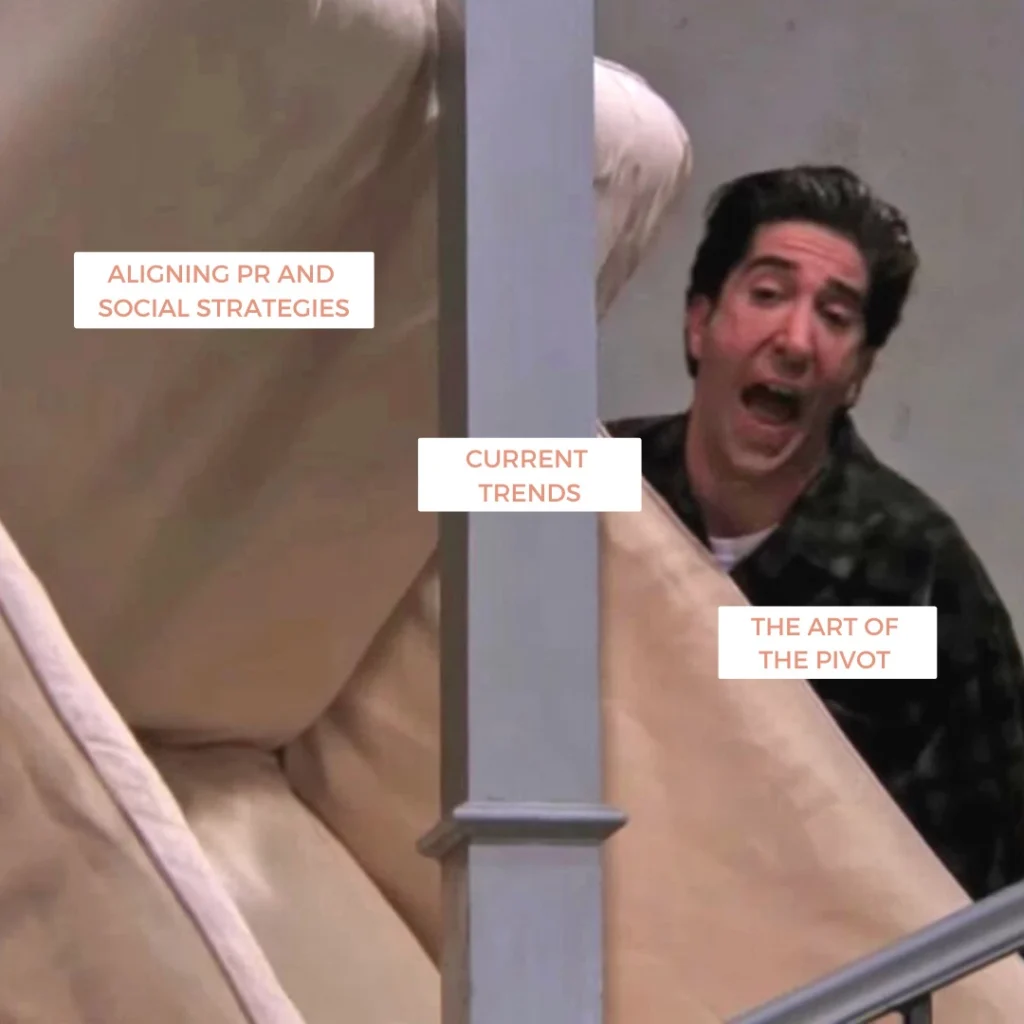Home » Public Relations » Adjusting PR Strategies To Align with Social Trends
The Art of the Pivot: Adjusting PR Strategies To Align with Social Trends
Ensure your PR strategy aligns with social trends.
In Confessions of an Advertising Man, David Ogilvy says “what you say in advertising is more important than how you say it.” Although public relations remains a business tactic that is separated from advertising, this quote couldn’t be more true for both fields.
What is noteworthy to you or your clients may not be noteworthy to the media. In PR, where coverage is earned not purchased, it’s important to ensure that you’re developing tactics not solely as a means of self-promotion, but rather as a way of communicating a message that the public would find interest in.
With the added bonus of the rapid rise of social media and the growing trust in influencers, – particularly local and nano-influencers who tend to be more brand loyal – connecting with audiences through nontraditional means presents an opportunity to grow a company’s brand perception positively in new, exciting ways.

Consider what your audience’s needs are, what challenges they are facing, and tailor your strategy to address those needs. When you flaunt features and figures, your customer gets lost in the narrative, and ultimately, without your customer there is no narrative.
An increased understanding of where your audience is most engaged can help guide your PR strategy by including social components and implications across those channels. Posting and engaging with your core community around their schedules allows your brand to build more meaningful and long-lasting relationships with your target audience.
Conversations may start in an office boardroom, in a Forbes article or through an influencer partnership, but they don’t end there. They continue on social media platforms like Twitter, TikTok and Instagram. Don’t make the mistake of ignoring brand perception in the comments, quote retweets or other engagements. One of the core components of understanding your brand’s sentiment is in understanding your social perception.
With that understanding comes a chance to elevate your brand and its messaging on the channels they already frequent. This ensures that your public relations strategy has an extended reach across your targeted demographics. Use Twitter, TikTok, Instagram and even LinkedIn to share messages with audiences who may not have come across your news on your corporate newsroom or through traditional media placements.
Pivoting away from a planned PR strategy can seem scary, but it’s the furthest thing from that. If what you’re doing isn’t working, it’s a smart move to go back to the drawing board (or even better – to build alternative approaches and options into your initial PR strategy, so you can quickly and easily pivot if your approach is not yielding the desired results).
Thomas Edison allegedly said, “I have not failed. I’ve just found 10,000 ways that won’t work.” When your desired media don’t seem to be finding your messaging compelling enough to write about, turn instead to what they have been compelled to write about recently. Are there any themes or trends from their previous articles that your company can lean into? Is there an upcoming announcement relevant to your industry that your new services have been successfully addressing for months? Are there trending topics or consistent concerns within your field that your team can offer a solution to? Is there an immediacy, proximity or novelty element to initiatives your company is working on that can be re-examined for media and your core audience?
At the end of the day, we live in a world where it’s still easier to understand things from a firsthand perspective. When you’re able to contextualize your news through the lens of the customer instead of the lens of the business, you’ve already taken a huge step forward in making an authentic connection with your audience. Let them know that you see them. After all, your business operates to make their lives easier – they don’t exist solely to serve your bottom line. Make sure your audience can feel that in your messaging.